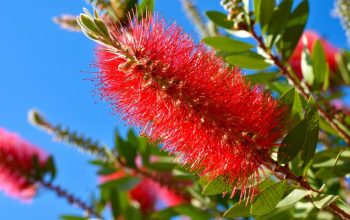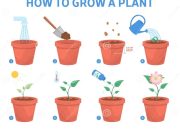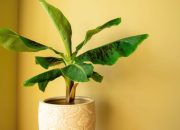Maintaining the Topping and Base Plant: How To Top A Pot Plant
How to top a pot plant – Successfully topping a pot plant requires ongoing care for both the newly formed top and the remaining base plant. Ignoring either will compromise the overall health and growth of your plant. Careful attention to watering, fertilization, and pest control is crucial for optimal results.Watering Requirements for Topping and Base PlantsThe watering needs of the topped plant and the base plant may differ slightly, depending on the species and the environmental conditions.
The base plant, having a larger root system, may require more frequent watering, especially during periods of high heat or low humidity. The topping, being smaller and potentially having a more limited root system initially, might require less frequent but more thorough watering to prevent root rot. Observe the soil moisture; water when the top inch feels dry.
Avoid overwatering, which can lead to root rot in both plants.Potential Problems and SolutionsOvercrowding is a common issue after topping. The two plants now compete for the same resources – sunlight, water, and nutrients. If the pot is too small, consider repotting each plant into its own container of appropriate size. This provides adequate space for root development and prevents nutrient competition.
Nutrient deficiency can manifest as yellowing leaves or stunted growth. Regular fertilization (as detailed below) helps mitigate this. Another potential problem is the development of pests or diseases, which should be addressed promptly.Fertilizing Schedule for Topping and Base PlantsA balanced liquid fertilizer diluted to half strength is generally recommended for both the topped plant and the base plant.
A schedule of bi-weekly applications during the growing season (spring and summer) is appropriate. Reduce the frequency to monthly during the dormant season (fall and winter). Choose a fertilizer formulated for the specific plant type for optimal results. For example, a 10-10-10 NPK (Nitrogen, Phosphorus, Potassium) fertilizer is a good general-purpose option, but adjusting the ratio might be necessary depending on the plant’s needs.
Over-fertilizing can damage the plants, so always follow the instructions on the fertilizer packaging.Maintenance ChecklistA regular maintenance routine is essential for the health and vigor of both plants. This checklist provides a guideline:
- Watering: Check soil moisture daily and water when the top inch feels dry. Adjust frequency based on environmental conditions.
- Fertilizing: Apply diluted liquid fertilizer bi-weekly during the growing season and monthly during the dormant season.
- Pruning: Regularly remove any dead, damaged, or diseased leaves and stems. This promotes air circulation and prevents the spread of disease.
- Deadheading: Remove spent flowers to encourage further flowering and prevent seed production.
- Pest Control: Regularly inspect plants for pests and diseases. Take prompt action if any are found, using appropriate organic or chemical controls.
- Monitoring: Observe the plants regularly for any signs of stress, such as wilting, yellowing leaves, or pest infestations. Address any issues promptly.
Top FAQs
What if my topping plant outgrows the pot?
Consider repotting the entire arrangement into a larger container or propagating cuttings from the topping plant to start anew.
How often should I fertilize both plants?
Follow the fertilizer instructions on the package, adjusting frequency based on the plants’ growth rates and the time of year.
What are some signs of nutrient deficiency?
Look for yellowing leaves, stunted growth, or discoloration. Adjust your fertilization schedule accordingly.
My topping plant is wilting, what should I do?
Check the soil moisture; underwatering is a common cause. Also, inspect for pests or diseases.
Pruning your potted plant, a gentle act of cultivation, mirrors the nurturing of a greater self. As your plant thrives, consider the next stage of its journey; perhaps a more spacious home is needed, such as one of the magnificent large plant pots for trees to allow for robust growth. Remember, just as topping encourages branching, so too does providing ample space foster flourishing.
The act of topping your pot plant is a meditation on growth, both inward and outward.












